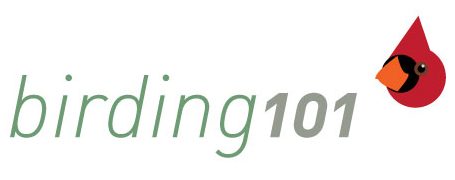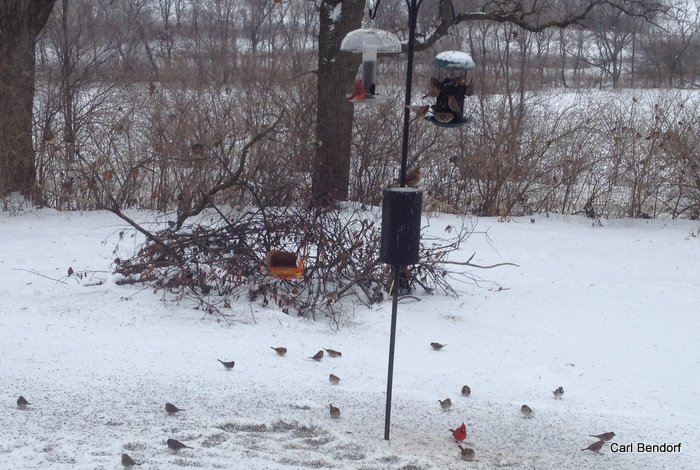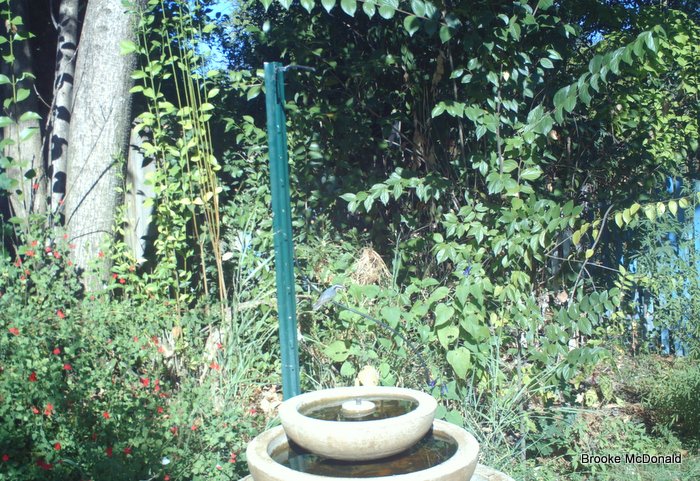Curiosity
The intro chapters stated that you don’t need binoculars and a field guide to start birding, just an internet connection and a point and shoot camera would suffice. Wrong! All you need is curiosity.
You look at birds with your bare eyes at the feeders in your garden or in the park. It is hard to know what the birds are, but hey, today almost every person has a camera in the pocket. Maybe not a large and bulky camera, but almost everyone has a camera on their phones. So you could carefully try to sneak up on the bird, which is not too difficult with these confiding birds, and take a picture.
Sure you recognise the Cardinal, even the drab lady Cardinal you recognise. And you recognise the Robin. But there are loads of other birds too. Is that a chickadee? How does a chickadee look like. Is that a wren? Maybe, but what kind of wren?
And what is that dull bird with some red on it? And what is that tan-colored bird with a white stripe on the wing? You feel stupid. You don’t know and you don’t know who to ask. Let’s check the internet.
This is what would go through your head if you were completely new to birds. You’d feel a bit intimidated to ask someone who would know better, but you can always google.
Perhaps you google “small red brown bird at feeder” on Google image search and some pictures do look like your bird. It could be a House Finch, but it was not as bright red as that. And the other one could be a Goldfinch. You feel insecure and need to ask someone. Since the feeder is just outside the kitchen window, you manage to get a shot of the bird with your cell phone. At this point it would be good to have a directory of birdwatching resources on the internet. That is what this chapter is about.
Web field guides to common birds.
Here are some cool websites you can use to identify the most common birds around you.
- Wild Bird Center’s Top 50 Backyard birds. This is an awesome resource. There is a version for the East and one for the West. Both works like a book but you have to read in online. There are about for pictures for each species. And they are all supplied also with the sound so you can hear the song of each species. Study these thoroughly and you will be able to identify most of the birds at your feeder without any trouble
- Audubon online field guide. If you don’t have a field guide your self this comes in very handy. There is also a very advanced search function in which you can describe the bird, what it looked like, and in what habitat the bird was encountered, flight pattern and geographic location. Then the system spits out some suggestions for you. Sadly, the system seems to have a bug when I checked, but when it gets going it shall become a fantastic resource.
- National Geographic Back Yard Bird Identifier. This should help you get closer to the identity of an unknown bird. A simpler system than what Audubon is intending above, but this one works. And it is fun too.
- What Bird also employs describing different features of the bird as well as location. Recommended.
- Cornell Lab of Ornithology has an online field guide on their All About Birds site. The are currently building a smarter ID tool called Merlin. You can help out by answering some general questions describing the bird.
Take a picture, honey!
Every so often you see a bird and you really, really, really would like to take a picture of it to find out afterwards what it was. Beware, this is the first sign that there is a birder inside of you who wants to come out. You have been warned.
You want to take a picture to upload it on the internet to ask an expert what kind of a bird it is. You don’t own a field guide (yet), and you can’t find it on the online resources listed above. You feel dazzled by all the bird diversity.
You took this shot with your phone and you got this speck of a bird. Can you even see it?
Please, don’t upload this. Do yourself and the people who will see your picture on the internet a favor. CROP! Most non-birders never crop. Birders always crop.
The absolutely easiest way to crop pictures is by downloading Picasa 3 – a free software from Google. It even allows you to do some editing. If you are looking for more serious editing capabilities check this link for the best free photo-editing software, which work like the famous Adobe Photoshop. Do note that some downloads come with notorious ads, or worse they may ask you to download a tool-bar. Decline all such offers.
Here is the pic after cropping.
Bird identification resources on the internet
In spite not being the best photo it is possible to identify it. For the sake of argument, let say you can’t find it in any of the resources listed above, or for whatever reason you need to get a fast answer.
For this blog post I did a test. I sent it to 3 online resources to get an answer. It took between 1-12 minutes to find out what this bird was. Impressive, huh? Remember it was only a speck taken with your phone.
- Birdforum. The number 1 birding website of the world has a section which encourage you to send photos of birds for identification. It took one minute to get the correct answer. Follow the thread here. There is seldom an explanation why a bird species is such and such, but nonetheless a valuable resource for any mystery bird you may have photographed.
- American Birding Association Facebook group. It took two minutes to get the right answer. With almost 4000 birders in this group there ought to be someone who knows what your North American Mystery bird is. Be sure you try to identify the bird yourself first with the online resources above, before you pin your picture to the group. The group welcomes both new and experienced birders, but it is not appropriate to use the group every time you have a bird you want identification help with.
- Birding School North America Facebook group. This is a smaller Facebook group consisting of about 100 birders, which specifically aim to help beginners. It was created specifically for the Birding 101 project when this whole idea started to shape in late September 2011 in a blogpost called The Future of birding. It took 12 minutes to get the correct identification. Everyone in this group loves to identify your bird pictures. We don’t care if you haven’t checked the field guide. But we will make an effort of telling you what the main field marks are, so you have a learning experience.
Another highly recommended Facebook group is The Facebook Bird ID group of the world which has a larger scope (the world) but a bunch of birders ready to help with identification. You should try come up with a guess, using the tools you have at hand, and also supply location. You will get the hints of the best field marks to look for.
Additional online resources worth checking out.
As I researched for this post I came across a few resources which perhaps does not totally fit the purpose of the post, but still could be valuable to you.
- Birdzilla. Has an online directory of many North American birds.
- Environment for the Americas – Bird Day has a lot of resources to organize birdwatching activities for kids.
- Birdforum tips to new birders has a lot of good info.
- Birders Hangman. Can you complete the bird name before the cowboy get hung.
- ebird bird distribution bar charts. Sometimes it helps to figure out what bird you have in front of you if you know what is available. Ebird provides a tremendous resource in this way.
Do you have other online tips for beginner birders? Please list in the comment section. In the next chapter of Birding 101, Stephen Ingraham from Zeiss will let us know how to choose a good point and shoot camera for birding. Now that you have been introduced and know where to post your pictures of birds you can’t identify, you may want to invest in a good point and shoot camera.
If you like this post, please consider sharing it with your friends, on mailing lists you belong to, on Twitter, on your Facebook wall, and on Facebook groups or you may blog about it. We need to get more people into caring about the birds. After all, with more people caring about birds, there will be more bird conservation, as the presence of the birds and bird lovers become more and more significant.
Finally, Subscribe to this blog, not to miss any future posts.
————————————————————————————————————————————————–
Oh, and if you wondered what the mystery bird was? It was a Red-breasted Nuthatch, photographed by Brooke McDonald in Redding, California.
Top photo; Goldfinch and house finch by Sarowen on flickr. Non-commercial CC licence. Feeeder picture by Carl Bendorf. Red-breasted Nuthatch by Brooke McDonald. Used with permission.



